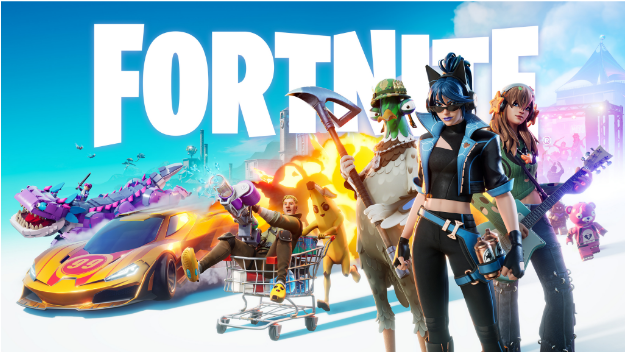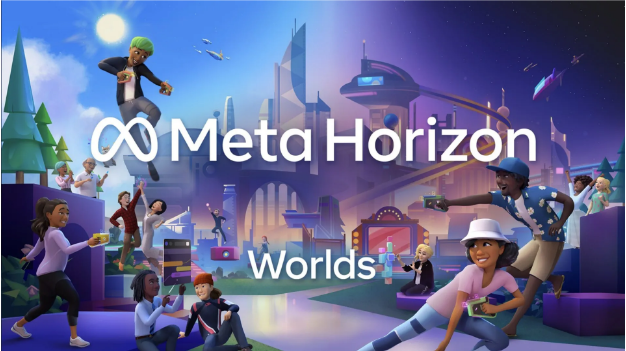The internet is constantly changing. From static websites in the early 2000s to social media taking over our lives, each wave brings a new way for brands to show up and connect with people.
Now, the next big thing is already here, called the metaverse. It's immersive, 3D, social, and pretty wild. For businesses and marketers, it's building an entire brand presence that feels alive in a virtual world.
The metaverse is becoming a place where your brand can live and breathe in a new way, whether you're a global brand or someone just tinkering with a logo maker for your side hustle.
Why Metaverse Marketing Matters
People spend more time in virtual spaces: gaming, socializing, shopping, and even working. For marketers, that means one big thing: meet your audience where they are. And right now, many are in the metaverse or on their way there.
Here’s why this new frontier is so essential:
- Immersive: People interact with brands more deeply when they’re part of an experience than just watching an ad.
- Builds community: The metaverse supports social interaction so that brands can build communities rather than just customers.
- Offers new revenue streams: From virtual goods to NFTs, brands can sell in ways that didn’t exist before.
- Expands creativity: No rules of physics here. A fashion brand can build a floating island boutique or host a concert on the moon.
- Reaches younger audiences: Generation Z and Gen Alpha are growing up with Roblox, Fortnite, and VR, and this is where their attention is going.
Top Metaverse Marketing Strategies
Now that we know why it matters, let’s look at how brands do it right. Here are some of the most effective marketing strategies in the metaverse.
1. Virtual product launches
Launching a product in the metaverse gives people something to do and experience. Imagine releasing a sneaker in a digital stadium packed with avatars, music pumping, lights flashing, and virtual influencers walking the “runway.” It’s more than a press release. It’s a party.
What makes these launches even more exciting is the interactivity. Users can try on the products (virtually), buy digital versions, or even unlock early access to real-world items. It’s gamified commerce, and it turns customers into participants.
2. Branded virtual worlds

Some companies are taking things further by building entire branded spaces in the metaverse. These are not just pop-up shops. We’re talking full-on digital worlds with games, quests, hangout zones, and even loyalty programs.
Nike’s Nikeland in Roblox is a good example. It’s a playground that builds brand loyalty through fun and social experiences. It feels less like a store and more like a digital community center, where the brand is part of the architecture.
3. Collaborations with virtual influencers
Influencer marketing isn't new, but virtual influencers are.
These are digital characters with massive followings, and brands are partnering with them to connect with audiences in the metaverse. The vibe here is way different than a traditional celeb endorsement. These influencers live in the same digital spaces as their followers.
What makes it work is the authenticity and shared environment. It feels natural if a virtual influencer is dancing in a metaverse club wearing a brand's outfit.
4. NFTs and digital collectibles

NFTs give people digital ownership, and in the Metaverse, that matters. Brands use NFTs as limited-edition items, membership cards, or access passes. NFTs are becoming everyday brand tools.
People love owning things that feel rare or exclusive, even virtual ones. That feeling translates into brand value. From Taco Bell’s NFT drops to luxury fashion houses selling digital-only handbags, these virtual goods can create real buzz and profound loyalty.
Platforms and Technologies
The metaverse is a whole mix of different environments. Some of the big players right now include:
Roblox

Roblox is among the most popular platforms for younger audiences, especially Gen Z and Gen Alpha. It’s a user-generated world where games, experiences, and branded spaces come to life.
Brands like Nike and Vans have created interactive playgrounds beyond advertising. These playgrounds are ideal for gamified marketing, where users engage with the brand while having fun.
Decentraland

Decentraland is a blockchain-based virtual world focusing heavily on digital ownership and commerce. Users own everything from virtual land to wearable items as NFTs. It’s a great platform for brands that want to explore the possibilities of virtual real estate, NFT merchandise, or even host token-gated events.
Fortnite

Fortnite started as a battle royale game but has evolved into a cultural hub. It’s now known for its massive virtual concerts and brand activations. Artists like Travis Scott and Ariana Grande have performed inside Fortnite, attracting millions of viewers.
Brands that want high visibility and entertainment-driven engagement often turn to this platform.
The Sandbox

The Sandbox is another blockchain-powered virtual world where users and brands can buy, sell, and build on virtual land. It’s highly customizable and gives brands creative freedom to design games or immersive experiences.
This platform is ideal for businesses that want more control over their virtual presence and want to tap into the NFT and Web3 ecosystems.
VRChat and Horizon Worlds

VRChat and Horizon Worlds are social VR platforms where people meet, hang out, and build communities. These are less commercial than other platforms but offer a strong sense of presence and interaction. They’re best suited for brands focusing on relationship-building and social engagement in immersive settings.
To build in these worlds, brands use 3D design software, blockchain for NFTs, and engines like Unity and Unreal for interactive environments.
Metaverse Marketing Strategies for Small Businesses
Small businesses don't need massive budgets to make an impact in the metaverse. Here are practical strategies that won't break the bank:
Start with simple virtual merchandise
Create basic branded items like virtual t-shirts, hats, or accessories for platforms like Roblox. These cost-effective digital goods can generate revenue while building brand awareness. Many small businesses have found success selling virtual clothing items for just $1-3 each, which can add up quickly with volume.
Partner with existing creators
Instead of building from scratch, collaborate with established creators and developers already active in metaverse platforms. This approach gives you access to their audience and expertise while splitting costs and risks. Look for creators whose values align with your brand. If you’re exploring more advanced integrations, such as NFTs or digital tokens, teaming up with a reliable blockchain development company can help you build secure and scalable solutions.
Host virtual events and workshops
Use platforms like Spatial or Frame to host free workshops, product demonstrations, or community meetups. These low-cost events can build relationships with customers and showcase your expertise. A local bakery, for example, could host virtual baking classes with participants following along at home.
For businesses planning larger or more immersive virtual experiences, ensuring professional-quality audio and visuals makes a huge difference. Collaborating with an experienced production team such as Audio Visual Nation can help brands create seamless, high-impact events that engage audiences across both real and virtual environments. Their expertise in hybrid event AV setup, lighting, and sound helps ensure your metaverse presence looks polished and professional.
Create branded mini-games
Develop simple, fun games that incorporate your brand naturally. Even basic puzzle games or trivia contests can engage audiences without complex development. Many small businesses have successfully used game-like experiences to teach customers about their products or services.
Leverage user-generated content
Encourage customers to create content featuring your brand in virtual spaces. Run contests for the best virtual outfit featuring your logo, or ask users to build structures inspired by your business. This strategy turns customers into brand ambassadors while creating authentic content.
Focus on community building
Use metaverse platforms as social hubs rather than just sales channels. Create a brand community where customers can connect with each other and your brand. This approach builds long-term loyalty and word-of-mouth marketing, which is especially valuable for small businesses with limited advertising budgets.
Test and iterate quickly
Start small with pilot projects to understand what resonates with your audience. The beauty of digital spaces is that you can quickly modify experiences based on user feedback without the costs associated with physical changes. Use analytics from platforms to guide your decisions.
Conclusion
The metaverse changes how brands look, act, and connect with people. It's not just about placing ads in digital spaces. It's about building identities that feel alive in worlds where users are viewers and participants. And honestly, isn’t that what good marketing has always been about?
If you’re considering building your brand’s identity in the metaverse, tools like BrandCrowd can give you a head start. Whether you need a custom logo, virtual storefront visuals, or branded assets for digital experiences, BrandCrowd makes it easy to create professional designs that fit right into immersive platforms.
Read more about digital marketing:
FAQs About Metaverse Marketing
What's the minimum budget needed for small businesses to start in the metaverse?
You can start with as little as $500-1000. Simple virtual merchandise on Roblox, basic event hosting on free platforms, or partnering with existing creators are all budget-friendly entry points. Focus on one platform initially rather than spreading resources thin across multiple spaces.
Which metaverse platform is best for small businesses just starting out?
Roblox is often the most accessible for beginners due to its large user base, built-in creation tools, and lower barrier to entry. However, the best platform depends on your target audience. If you're targeting professionals, platforms like Spatial might be more appropriate than gaming-focused environments.
How can I measure ROI from metaverse marketing as a small business?
Track metrics that align with your goals: virtual product sales, event attendance, community growth, time spent in your branded spaces, and user-generated content creation. Many small businesses also see indirect benefits from metaverse activities, such as increased website traffic, social media management software, and real-world sales.
Do I need technical skills to create metaverse marketing campaigns?
Not necessarily. Many platforms offer user-friendly creation tools, and you can partner with virtual assistants, freelance developers, or agencies that specialize in metaverse content. Start with simple initiatives like hosting events or creating basic virtual merchandise before moving to more complex projects.
How do I know if my target audience is active in the metaverse?
Research your demographic's gaming and social media habits. Gen Z and Gen Alpha are heavily present, but older audiences are growing. Survey your existing customers about their virtual world participation, or test small campaigns to gauge interest. Many businesses are surprised by their audience's metaverse engagement.
What legal considerations should small businesses know about metaverse marketing?
Protect your intellectual property by trademarking logos and brand elements that will appear virtually. Understand the platform's terms of service, especially when it comes to virtual goods sales and user data collection. Consider privacy policies for immersive experiences and ensure compliance with advertising regulations in your jurisdiction.
How can small businesses compete with big brands that have larger metaverse budgets?
Focus on authenticity, community building, and personalized experiences that big brands often struggle to deliver. Small businesses can be more agile. You can be more responsive to customer feedback. Be creative with limited resources. Your advantage lies in building genuine relationships rather than flashy, expensive activations.
Header Artwork by Khim John Blazo
Written by DesignCrowd on Thursday, June 19, 2025
DesignCrowd is an online marketplace providing logo, website, print and graphic design services by providing access to freelance graphic designers and design studios around the world.

